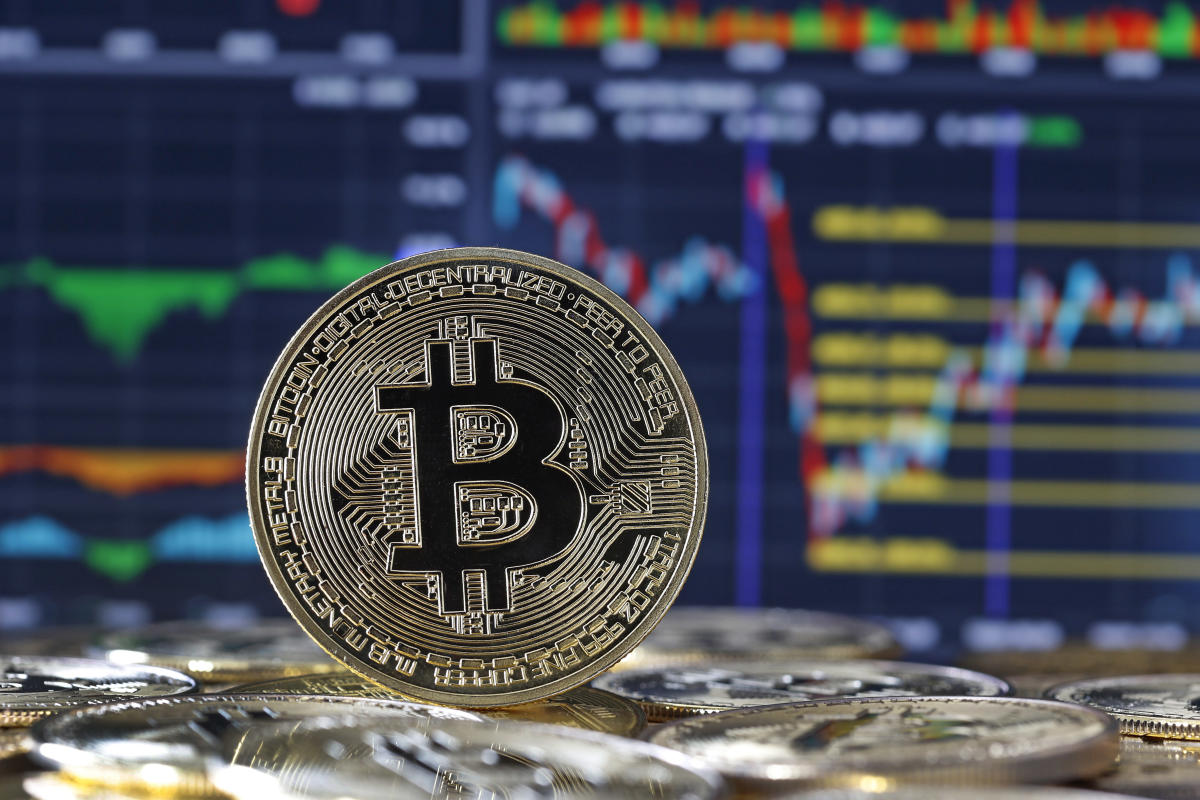News
How to Find New Cryptocurrencies for Investment

| Cryptocurrency Exchanges | Binance, Coinbase, Crypto.com, Gemini, Kraken |
| Data Aggregators | CoinGecko, CoinMarketCap |
| Social Media | Discord, Telegram, X (formerly Twitter) |
| Tools | KryptView.com, BSCCheck, TokenSniffer |
| Websites | Smith & Crown, Top ICO List |
| Decentralized Finance Platforms | These services provide methods for creating DeFi applications and might have tokens or coins available. |
| NFT Marketplaces | OpenSea, Rarible, and SuperRare are popular marketplaces to look for new NFTs that show promise. |
| Initial Coin Offerings | Initial coin offerings are fundraising events for possible coin releases. |
| Exchange-Traded Funds | You can invest indirectly in crypto through derivatives or securitized crypto that trade on mainstream exchanges. |
Exchanges
Cryptocurrency exchanges are one of the most reliable sources for finding new investments. For example, Coinbase generally lists new cryptocurrencies on its website, but you must set up an account for better access. Binance also lists new crypto you can review and investigate further.
Data Aggregators
A data aggregator gathers information on specific topics. Cryptocurrency data aggregators help you find new crypto. For instance, CoinMarketCap collects and displays a list of new cryptocurrencies, their prices, market capacity, and trading volume. This type of service helps you get some information to determine what other investors think about the cryptocurrency and whether it has potential.
CoinGecko is another data aggregator that lists new coins with much of the same information that CoinMarketCap offers.
Crypto data aggregators may report late or inaccurate information from exchanges because there can be network lag between trades made and prices displayed on the aggregator. The best way to see real-time prices is to use a trading platform.
Social Media
Social media is known for its ability to transmit information fast. X (formerly Twitter), for example, is one of the quickest-moving and -responding platforms in the United States. You can easily find cryptocurrency developers and founders on X, tweeting about their cryptocurrency whenever there are changes or new coins.
Notifications for specific keywords on X are especially helpful. If you set up alerts for phrases like new crypto, crypto release, or crypto, you will receive notifications about any cryptocurrency-related tweet.
Telegram is another instant messaging platform that can deliver timely new crypto developments.
Websites
There are many websites that you can look over to find new cryptocurrencies. Some of the more reputable ones are Top ICO List and Smith & Crown.
Tools
You can use several tools to help you verify the validity of a cryptocurrency. KryptView lets you enter the token name or its address, and BSCCheck lets you check tokens on the Binance Smart Chain. Each displays information about transactions, contracts, holders, prices, and more, enabling you to see whether anyone else is active. There are many other tools available for token investigating.
Token Sniffer lets you enter the cryptocurrency’s name or address and displays an audit of it. For instance, a scan of Ax-1 Orbit (address 0x0c…b805) displayed the following information for token dated Aug. 8, 2022:
- Warning: The coin was flagged for being part of a scam, bug, or hack.
- Swap Analysis: The token is sellable and has a buy-and-sell fee of less than 10%
- Contract Analysis: Verified contract, no prior similar contracts, the source is not an owner, no special creator permissions
- Holder Analysis: Creator holds less than 5% of the supply, other holders have less than 5% of the supply
- Liquidity Analysis: Not enough liquidity, 95% of liquidity is burned/locked, creator holds less than 5% of liquidity
- Token Similarities: None
Token Sniffer
Token Sniffer lets you view the contract code and generate a bubble map showing you the creator’s address, the addresses of the top 100 holders, and the percentage they hold. You’ll also see any burn addresses, which is where developers send coins to take them permanently out of circulation.
DeFi Platforms
Decentralized finance (DeFi) platforms are ecosystems that combine blockchain, programming, and user interfaces that allow you to create decentralized applications (dApps). Some might even offer exchange and trading services, but most are designed to support decentralized finance applications like peer-to-peer lending and borrowing.
Many DeFi platforms have native tokens used within their networks to facilitate transactions. Examples of DeFi platforms are Maker, Uniswap, and Aave. In addition to being a blockchain, Ethereum also functions as a DeFi platform because it allows users to create anything they want on it, including dApps.
Non-Fungible Token (NFT) Marketplaces
NFTs are one-of-a-kind digital assets that have been tokenized. Tokenization is the process of linking hashed information from the asset and storing it on a blockchain. It establishes ownership without question because the token’s network validators must verify ownership through a consensus.
NFTs are also critical components of the metaverse, an emerging tech trend championed by enterprises that operate in the digital landscape. OpenSea and Rarible are two examples of popular NFT marketplaces. Here, you can find them ranging in price from hundreds to tens of thousands of dollars.
There are also specialized marketplaces that focus on a particular industry or sport. For example, the National Basketball Association (NBA) has an NFT marketplace called TopShot. Additionally, the National Football League (NFL) has partnered with Dapper Labs to produce exclusive digital video highlights of iconic moments in its history.
Luxury retailers, such as Tiffany and Gucci, sell NFTs, which are popular with some customers.
Initial Coin Offerings (ICOs)
Initial coin offerings (ICOs) eclipsed venture capital as the primary fundraising method for entrepreneurs in 2018. Startups and prominent companies alike jumped onto the ICO bandwagon. Then, the ICO bubble burst as scams proliferated in their ecosystem, and the Securities and Exchange Commission (SEC) began investigating and cracking down on them. The SEC now provides substantial guidance on when tokens and ICOs are considered the sale of a security.
You can still find ICOs, but they are highly regulated and not nearly as numerous.
Exchange-Traded Funds (ETFs)
You can also invest indirectly in cryptocurrencies through derivatives that trade on mainstream exchanges. The Chicago Mercantile Exchange (CME) crypto futures, including Bitcoin and ether futures, are popular with investors looking for indirect exposure to crypto. Bitcoin-linked exchange-traded funds (ETFs), based on CME’s Bitcoin futures, debuted in crypto markets in 2021.
In January 2024, the long-awaited and embattled Bitcoin Spot ETFs were approved by the SEC. These ETFs offer exposure to bitcoin but are much cheaper because you can purchase shares of a fund that holds bitcoin rather than buy bitcoin directly.
Best Crypto to Invest In
There are always new projects with cryptocurrencies appearing, so there is no shortage of choices. You can invest in the most popular cryptocurrencies like:
- Bitcoin: Price—$62,468, market cap—$1.2 trillion, 24-hour trading volume—$25 billion
- Ethereum: Price—$3,014, market cap—$362 billion, 24-hour trading volume—$11.4 billion
- BNB: Price—$594, market cap—$87 billion, 24-hour trading volume—$1.9 billion
- Solana: Price—$148, market cap—$66 billion, 24-hour trading volume—$2.3 billion
However, there are many others with the potential to grow. When evaluating that opportunity, consider several factors, such as market cap, 24-hour volume, and reading the company whitepaper.
Researching New Crypto Coins
Beneath their technical jargon, cryptocurrencies are products that serve a purpose, whether it be only a payment method (bitcoin) or as a utility token used to perform actions on a blockchain (ether).
Here are some factors to look into and tools you can use to help identify a coin that is not a so-called rug pull (or another scam). A rug pull is a coin whose developers will accept payments for it and then pull it off whatever platform you purchased it on while keeping the funds you paid.
Use Cases
Ethereum’s ether (ETH) token is used as a payment system on its blockchain. This makes ETH a perfect example of a use case that might incentivize someone to buy ETH. Ethereum is designed for scalability and future development, making it an ideal ecosystem on which to build DeFi applications.
The uses for Ethereum, the global virtual machine that powers much of DeFi—and is rumored to be the choice of developers for Web 3—continue to grow. New utility tokens designed to work on the Ethereum Virtual Machine (EVM) emerge frequently.
Bitcoin, on the other hand, was designed purely as a payment method. But when investors noticed its price was climbing, the token developed another purpose. The global pandemic shut down much of the world’s economy briefly, and stock markets worldwide tumbled. Bitcoin, however, became a safe haven for investors looking to preserve value and a speculative investment.
The more use cases that a new coin and the blockchain that it supports have, the more likely it is that the cryptocurrency will last long enough to experience growth. However, this won’t always be the case.
Liquidity
A cryptocurrency needs liquidity—meaning that it should have enough trading volume to sell it quickly if you need to. If you find a cryptocurrency with no volume, you should consider waiting to see whether it will develop any. If other investors aren’t trading a new crypto coin in large amounts, it might indicate that it isn’t yet worth buying or is a scam.
Value
You should identify the value a coin has or might have. It’s likely that if it has value to you, others will value it. This type of value isn’t only monetary; it could be intangible, such as an NFT that you identify with on a personal level.
Some songwriters and musicians are creating NFTs from their music. Purchasing a song NFT directly supports the artists and gives you ownership of the token and whatever rights the artist granted when the token was minted. The sports tokens mentioned previously may be the equivalent of trading cards or videos of the future.
Some additional considerations are:
- Prospects: If you’re able to identify a cryptocurrency with an edge over others—such as providing a solution to a widespread problem—it might be a good investment because it could have longevity.
- Supply and demand: Many cryptocurrencies have a predetermined maximum supply. When that maximum is reached, typically through mining efforts, no new tokens will be produced. Demand may increase or decrease depending on market sentiments and use cases.
- Price and volume: Up-to-date information about cryptocurrency trading is easily available online. Digital currencies with increasing prices and trading volume are likely to be those that have momentum. Of course, there is no guarantee that this momentum will be maintained, but it is nonetheless a useful way of seeing which digital currencies have the most investor interest for the time being.
How Do I Get New Cryptocurrencies?
You can buy them and other digital assets at cryptocurrency exchanges, decentralized finance platforms, non-fungible token marketplaces, and initial coin offerings.
How Do I Acquire a New Cryptocurrency Before Listing?
New cryptocurrencies may be available in a presale before they are listed on an exchange—but you should exercise caution. There have been many instances where cryptocurrency issuers have disappeared with investor’s money after a fundraising sale. Other scams are also abundant.
How Often Are New Cryptocurrencies Launched?
New cryptocurrencies emerge regularly. The data aggregator CoinMarketCap lists new coins and tokens daily, and Top ICO List details new ICOs. X and Telegram are also popular social media platforms for new coin announcements.
The Bottom Line
The universe of investable cryptocurrencies and crypto-related products and services is still small and requires careful evaluation. If you’re interested in investing in digital assets and new crypto, you should first talk with a finance professional to help you figure out if the investments make sense for your goals and financial circumstances.
The comments, opinions, and analyses expressed on Investopedia are for informational purposes online. Read our warranty and liability disclaimer for more info. As of the date this article was written, the author does not own cryptocurrency.
News
Bitcoin soars above $63,000 as money flows into new US investment products

Bitcoin has surpassed the $63,000 mark for the first time since November 2021. (Chesnot via Getty Images)
Bitcoin has broken above the $63,000 (£49,745) mark for the first time since November 2021, when the digital asset hit its all-time high of over $68,000.
Over the past 24 hours, the value of the largest digital asset by market capitalization has increased by more than 8% to trade at $63,108, at the time of writing.
Learn more: Live Cryptocurrency Prices
The price appreciation was fueled by record inflows into several U.S.-based bitcoin cash exchange-traded funds (ETFs), which were approved in January this year.
A Bitcoin spot ETF is a financial product that investors believe will pave the way for an influx of traditional capital into the cryptocurrency market. Currently, indications are favorable, with fund managers such as BlackRock (BLK) and Franklin Templeton (BEN), after allocating a record $673 million into spot Bitcoin ETFs on Wednesday.
Learn more: Bitcoin’s Success With SEC Fuels Expectations for an Ether Spot ETF
The record allocation surpassed the funds’ first day of launch, when inflows totaled $655 million. BlackRock’s iShares Bitcoin Trust ETF (I BITE) alone attracted a record $612 million yesterday.
Bitcoin Price Prediction
Earlier this week, veteran investor Peter Brandt said that bitcoin could peak at $200,000 by September 2025. “With the push above the upper boundary of the 15-month channel, the target for the current market bull cycle, which is expected to end in August/September 2025, is raised from $120,000 to $200,000,” Brandt said. published on X.
The influx of capital from the traditional financial sphere into Bitcoin spot ETFs is acting as a major price catalyst for the digital asset, but it is not the only one. The consensus among analysts is that the upcoming “bitcoin halving” could continue to drive flows into the bitcoin market.
The Bitcoin halving is an event that occurs roughly every four years and is expected to happen again next April. The halving will reduce the bitcoin reward that miners receive for validating blocks on the blockchain from 6.25 BTC to 3.125 BTC. This could lead to a supply crunch for the digital asset, which could lead to price appreciation.
The story continues
Watch: Bitcoin ETFs set to attract funds from US pension plans, says Standard Chartered analyst | Future Focus
Download the Yahoo Finance app, available for Apple And Android.
News
FRA Strengthens Cryptocurrency Practice with New Director Thomas Hyun

Forensic Risk Alliance (FRA), an independent consultancy specializing in regulatory investigations, compliance and litigation, has welcomed U.S.-based cryptocurrency specialist Thomas Hyun as a director of the firm’s global cryptocurrency investigations and compliance practice. Hyun brings to the firm years of experience building and leading anti-money laundering (AML) compliance programs, including emerging payment technologies in the blockchain and digital asset ecosystem.
Hyun has nearly 15 years of experience as a compliance officer. Prior to joining FRA, he served as Director of AML and Blockchain Strategy at PayPal for four years. He established PayPal’s financial crime policy and control framework for its cryptocurrency-related products, including PayPal’s first consumer-facing cryptocurrency offering on PayPal and Venmo, as well as PayPal’s branded stablecoin.
At PayPal, Hyun oversaw the second-line AML program for the cryptocurrency business. His responsibilities included drafting financial crime policies supporting the cryptocurrency business, establishing governance and escalation processes for high-risk partners, providing credible challenge and oversight of front-line program areas, and reporting to the Board and associated authorized committees on program performance.
Prior to joining PayPal, Hyun served as Chief Compliance Officer and Bank Secrecy Officer (BSA) at Paxos, a global blockchain infrastructure company. At Paxos, he was responsible for implementing the compliance program, including anti-money laundering and sanctions, around the company’s digital asset exchange and its asset-backed tokens and stablecoins. He also supported the company’s regulatory engagement efforts, securing regulatory approvals, supporting regulatory reviews, and ensuring compliance with relevant digital asset requirements and guidelines.
Thomas brings additional experience in payments and financial crime compliance (FCC), having previously served as Vice President of Compliance at Mastercard, where he was responsible for compliance for its consumer products portfolio. He also spent more than seven years in EY’s forensics practice, working on various FCC investigations for U.S. and foreign financial institutions.
Hyun is a Certified Anti-Money Laundering Specialist (CAMS) and a Certified Fraud Examiner (CFE). He is a graduate of New York University’s Stern School of Business, where he earned a bachelor’s degree in finance and accounting. Additionally, he serves on the board of directors for the Central Ohio Association of Certified Anti-Money Laundering Specialists (ACAMS) chapter.
Commenting on his appointment, Hyun said, “With my experience overseeing and implementing effective compliance programs at various levels of maturity and growth, whether in a startup environment or large enterprises, I am excited to help our clients overcome similar obstacles and challenges to improve their financial crime compliance programs. I am excited to join FRA and leverage my experience to help clients navigate the complexities of AML compliance and financial crime prevention in this dynamic space.”
FRA Partner, Roy Pollittadded: “As the FRA’s sponsor partner for our growing Cryptocurrency Investigations and Compliance practice, I am thrilled to have Thomas join our ever-expanding team. The rapid evolution of blockchain and digital asset technologies presents both exciting opportunities and significant compliance challenges. Hiring Thomas in a leadership role underscores our commitment to staying at the forefront of the industry by enhancing our expertise in anti-money laundering and blockchain strategy.”
“Thomas’ extensive background in financial crime compliance and proven track record of building risk-based FCC programs in the blockchain and digital asset space will be invaluable as we continue to provide our clients with the highest level of service and innovative solutions.”
“FRA strengthens cryptocurrency practice with new director Thomas Hyun” was originally created and published by International Accounting Bulletina brand owned by GlobalData.
The information on this website has been included in good faith for general information purposes only. It is not intended to amount to advice on which you should rely, and we make no representations, warranties or assurances, express or implied, as to its accuracy or completeness. You must obtain professional or specialist advice before taking, or refraining from, any action on the basis of the content on our website.
News
Bitcoin trades around $57,000, crypto market drops 6% ahead of Fed decision

-
Bitcoin fell in line with the broader cryptocurrency market, with ether and other altcoins also falling.
-
Financial markets were weighed down by risk-off sentiment ahead of the Fed’s interest rate decision and press conference later in the day.
-
10x Research said it is targeting a price target of $52,000 to $55,000, anticipating further selling pressure.
Bitcoin {{BTC}} was trading around $57,700 during European morning trading on Wednesday after falling to its lowest level since late February, as the world’s largest cryptocurrency recorded its worst month since November 2022.
BTC has fallen about 6.3% over the past 24 hours, after breaking below the $60,000 support level late Tuesday, according to data from CoinDesk. The broader crypto market, as measured by the CoinDesk 20 Index (CD20), lost nearly 9% before recovering part of its decline.
Cryptocurrencies have been hurt by risk-off sentiment in broader financial markets amid stagflation in the United States, following indications of slowing growth and persistent inflation that have dampened hopes of an interest rate cut by the Federal Reserve. The Federal Open Market Committee is due to deliver its latest rate decision later in the day.
Ether {{ETH}} fell about 5%, dropping below $3,000, while dogecoin {{DOGE}} led the decline among other major altcoins with a 9% drop. Solana {{SOL}} and Avalanche {{AVAX}} both lost about 6%.
Bitcoin plunged in April, posting its first monthly loss since August. The 16% drop is the worst since November 2022, when cryptocurrency exchange FTX imploded, but some analysts are warning of further declines in the immediate future.
10x Research, a digital asset research firm, said it sees selling pressure toward the $52,000 level due to outflows from U.S. cash exchange-traded funds, which have totaled $540 million since the Bitcoin halving on April 20. It estimates that the average entry price for U.S. Bitcoin ETF holders is $57,300, so this could prove to be a key support level.
The closer the bitcoin spot price is to this average entry price, the greater the likelihood of a new ETF unwind, 10x CEO Markus Thielen wrote Wednesday.
“There may have been a lot of ‘TradeFi’ tourists in crypto – pushing longs all the way to the halving – that period is now over,” he wrote. “We expect more unwinding as the average Bitcoin ETF buyer will be underwater when Bitcoin trades below $57,300. This will likely push prices down to our target levels and cause a -25% to -29% correction from the $73,000 high – hence our $52,000/$55,000 price target over the past three weeks.”
The story continues
UPDATE (May 1, 8:56 UTC): Price updates throughout the process.
UPDATE (May 1, 9:57 UTC): Price updates throughout the process.
UPDATE (May 1, 11:05 UTC): Adds analysis from 10x.
News
The Cryptocurrency Industry Is Getting Back on Its Feet, for Better or Worse

Hello from Austin, where thousands of crypto enthusiasts braved storms and scorching heat to attend Consensus. The industry’s largest and longest-running conference, which can sometimes feel like a religious revival, offers opportunities to chat and listen to leading names in crypto. And for the casual observer, Consensus offers a useful glimpse into the mood of an industry prone to wild swings in fortune.
Unsurprisingly, the mood is noticeably more positive than it was a year ago, when crowds were sparse and many attendees were quietly confiding that they were considering switching to AI. In practice, that means some of the more obnoxious elements are back, but not to the level of Consensus 2018 in New York, when charlatans parked Lamborghinis outside the event and the hallways were lined with booth girls and scammers pitching “ICOs in a box.”
This time around, Elon Musk’s Cybertrucks have replaced Lamborghinis as the vehicle of choice for marketers. One of the most notable publicity stunts was a startup that paid a poor guy to parade around in the Texas sun in a Jamie Dimon costume, wig, and mask, and then staged a mock assault on him by memecoin characters.
Outside the event was a giant “RFK for President” truck, while campaign staffers manned a booth instead — a reflection of both the election year and crypto’s willingness to latch onto any candidate, no matter how outlandish, who will talk about the industry. RFK himself is scheduled to address the conference on Thursday.
Excesses aside, the general sense of optimism was understandable. The cryptocurrency market has not only recovered from the wave of fraud that nearly sank it in 2022, it is riding a new wave of political legitimacy. This month, cryptocurrencies scored once-unthinkable political victories in Washington, D.C., and there is a sense that the industry has not only withstood the relentless regulatory assaults of SEC Chairman Gary Gensler and Sen. Elizabeth Warren, but is poised to defeat them.
And while cryptocurrency is still searching for its flagship application, the optimists I spoke with pointed to signs that it is (once again) upon us. Those signs include the rapid advancement of zero-knowledge proofs as well as the popularity of Coinbase’s Base blockchain and, perhaps most importantly, the large-scale arrival of traditional finance into the world of cryptocurrencies – a development that not only provides a major financial boost, but also a new element of stability and maturity that will, perhaps, tame the worst of crypto’s wilder side. Finally, this consensus marked the end of the Austin era as the conference, under new leadership, will be held in Toronto and Hong Kong in 2025.
The story continues
Jeff John Roberts
jeff.roberts@fortune.com
@jeffjohnroberts
This story was originally featured on Fortune.com
-

 News1 year ago
News1 year agoBitcoin soars above $63,000 as money flows into new US investment products
-

 DeFi1 year ago
DeFi1 year agoEthena downplays danger of letting traders use USDe to back risky bets – DL News
-

 News1 year ago
News1 year agoFRA Strengthens Cryptocurrency Practice with New Director Thomas Hyun
-

 DeFi1 year ago
DeFi1 year agoZodialtd.com to revolutionize derivatives trading with WEB3 technology
-

 Markets1 year ago
Markets1 year agoBitcoin Fails to Recover from Dovish FOMC Meeting: Why?
-

 DeFi1 year ago
DeFi1 year ago👀 Lido prepares its response to the recovery boom
-

 Markets1 year ago
Markets1 year agoWhale Investments in Bitcoin Reached $100 Billion in 2024, Fueling Crazy Investor Optimism ⋆ ZyCrypto
-

 Markets1 year ago
Markets1 year agoWhy Bitcoin’s price of $100,000 could be closer than ever ⋆ ZyCrypto
-

 DeFi1 year ago
DeFi1 year agoPancakeSwap integrates Zyfi for transparent, gas-free DeFi
-

 Markets1 year ago
Markets1 year agoWhales are targeting these altcoins to make major gains during the bull market 🐋💸
-

 DeFi1 year ago
DeFi1 year ago🏴☠️ Pump.Fun operated by Insider Exploit
-

 News1 year ago
News1 year agoHow to make $1 million with crypto in just 1 year 💸📈





